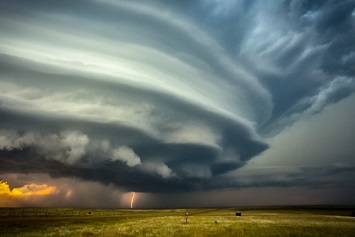With hurricane season here to stay until the end of November, it’s important to think about how prepared (or unprepared) your workplace is for a disaster. Tornadoes. Fires. Floods. They’re all happening much more frequently than they did decades ago, and they’re dangerous and expensive.
Last year, for example, the United States experienced 14 disasters, and each cost the economy $1 billion or more in damage, according to CNBC. The average number of billion-dollar disasters each year from 2016 to 2018 was 15. Meanwhile, by comparison, the average from 1980 to 2018 was only 6.2 events per year.
It’s easy to brush aside the need to be prepared if your company has never experienced a major disaster firsthand. Almost 70% of small business owners say they don’t have a written disaster plan in place, according to Nationwide. But not having any sort of plan can be disastrous for your business.
Check out these startling facts from the Federal Emergency Management Agency:
- 40% to 60% of small businesses don’t reopen after a disaster.
- 90% of small businesses close within a year of a disaster if they can’t reopen within 5 days.
Major disasters can lead to a slew of issues, including lost income, unexpected business expenditures, regulatory fines, contractual penalties, or even lost customers. Issues take time to sort out after a disaster, but you’ll be in a much better place if you think ahead of time about the risks that your business could face.
Then, there’s the issue of safety. Your employees’ safety is your number one priority. By not having a disaster preparedness plan, you could be jeopardizing the safety of your employees and your business.
Before a Disaster
As part of a good disaster preparedness plan, you should ensure that all of your important documents and contacts are backed up to the cloud. Ideally, you should also download your important contacts so that you can access them offline in the event you lose your Internet connection.
An increased number of workplaces are also installing so-called Smart Home devices. These devices can give you advance notice of weather disasters and alert you to elevated levels of heat or water. Wi-Fi cameras also can simplify the small business insurance claims process by giving you a backed-up visual record of your workplace.
It’s also important to remember your customers. Google My Business is a good way to stay in touch with the public regarding your hours of operation and any other important pieces of information.
During and After a Disaster
During a disaster, it’s important to account for every one of your employees and ensure that each is feeling safe and emotionally supported. Communicate with your workers using group chats and other mass communication platforms. Pivot to a remote work setup to steer them away from dangerous conditions. Also, stay in contact with important business stakeholders by redirecting your phone calls to a line that you can monitor.
After a disaster, if everyone is safe, you can begin to think about the financials of rebuilding your business or, if your business dodged the brunt of the disaster, consider giving back to your community through online fundraisers.
Fundera created an animated infographic to keep your workplace safe before, during, and after a disaster.

Infographic provided by fundera.com.
 Meredith Wood is the editor in chief at Fundera. She has specialized in advice for small business owners for almost a decade and is sought out frequently for her expertise in small business lending. Meredith Wood is the editor in chief at Fundera. She has specialized in advice for small business owners for almost a decade and is sought out frequently for her expertise in small business lending. |

